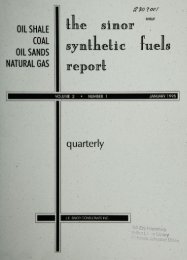Disclaimer - Alliance Digital Repository
Disclaimer - Alliance Digital Repository
Disclaimer - Alliance Digital Repository
Create successful ePaper yourself
Turn your PDF publications into a flip-book with our unique Google optimized e-Paper software.
29<br />
Chapter 3 – Methodology<br />
Life Cycle models followed :<br />
This project consisted of developing a Web-based application that was used as a<br />
CRM tool. Since an application was designed, coded, and implemented it was fitting to<br />
use the Software Development Life Cycle (SDLC) and a somewhat modified ancillary<br />
model, the Prototyping Life Cycle which was discussed earlier in this paper and depicted<br />
in Figure 4. According to Fioravanti (2005), there are two Prototyping Life Cycles that<br />
one can use in application development. The first is called the throw-away prototype and<br />
is usually used in a rapid application development (RAD) project/environment and the<br />
second is the real life cycle in which follows more methodical development (Fioravanti,<br />
2005). While this project needed to be developed rather rapidly the throw-away<br />
prototype just did not seem to be as suitable for the project as the true Prototyping Life<br />
Cycle. The phases of this life cycle allowed for rapid development, but also, for the<br />
flexibility of going back to previous phases and building on itself; similar to the Spiral<br />
Life Cycle.<br />
1. Requirements: The application was built from the requirements given to this<br />
author by the owner of the project at ARC. The requirements gathering phase<br />
consisted of meeting with management personnel at ARC to gain a thorough<br />
understanding of the goals they wanted to accomplish with the application. These<br />
requirements were then used throughout the project and were revisited during<br />
development of the individual project modules. Once all of the requirements were<br />
met the application was deemed complete.















![pace SrntfletIc fne]its report - Alliance Digital Repository](https://img.yumpu.com/10493335/1/190x245/pace-srntfletic-fneits-report-alliance-digital-repository.jpg?quality=85)
